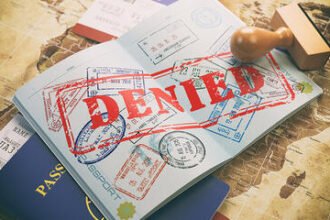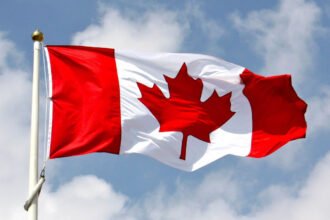For many international dental graduates (IDGs), Canada represents a land of opportunity, with high standards of living, advanced clinical infrastructure, and a growing demand for healthcare professionals. However, practicing dentistry in Canada as a foreign-trained dentist is not a simple matter of transferring credentials. It involves a comprehensive and regulated process, overseen primarily by the National Dental Examining Board of Canada (NDEB)—now under the scope of the Canadian Dental Regulatory Authorities Federation (CDRAF) and guided by the Commission on Dental Accreditation of Canada (CDAC).
In this article, we’ll break down the complete journey through the Canadian dental licensing pathway for international dental graduates—covering key assessments, required documentation, financial considerations, preparatory resources, and useful strategies to succeed.
🔗 National Dental Examining Board of Canada (NDEB)
Understanding the Role of the NDEB and CDAC
What Is the NDEB?
The NDEB is the official body responsible for assessing and certifying the competence of dentists wishing to practice in Canada. It develops and administers the assessments and examinations required to obtain a license to practice dentistry in any of Canada’s provinces or territories.
What Is the CDAC?
The Commission on Dental Accreditation of Canada (CDAC) evaluates and accredits dental education programs in Canada and select international programs. Graduates from accredited programs follow a different licensing pathway than those from non-accredited programs.
Step 1: Determine If Your Dental Program Is Accredited
This is the most critical first step. Your path as an IDG depends on whether your dental degree comes from a CDAC-accredited institution.
Accredited Program Countries:
- Canada
- United States
- Australia (after 2011)
- New Zealand (after 2011)
- Ireland (after 2012)
If you graduated from one of these, you can go directly to the NDEB Written and OSCE Examinations.
🔗 List of Accredited Dental Programs
If your school is not accredited, you must complete the Equivalency Process, which includes three assessments before you are eligible for the final exams.
Step 2: Create an NDEB Profile and Submit Documents
The first actionable step is to create an online profile with the NDEB and submit your credentials for verification.
Required Documents:
- Degree or diploma certificate
- Academic transcripts
- Government-issued ID
- Proof of name change (if applicable)
- Internship certificates
- Language proficiency test (varies by province)
Your documents must be verified through the Document Verification Service (DVS), which checks the authenticity of your credentials. You’ll also pay an application fee to open your NDEB profile.
Step 3: Begin the NDEB Equivalency Process
If you’re from a non-accredited program, you must go through the Equivalency Process, which includes three major assessments:
1. Assessment of Fundamental Knowledge (AFK)
- A written exam of basic dental sciences
- 200 multiple choice questions (MCQs)
- Offered in February and August
- You must pass this to move to the next step
2. Assessment of Clinical Judgement (ACJ)
- Tests your decision-making and diagnostic abilities
- 120-150 multiple-choice and short-answer questions
- Scenarios include radiographic interpretation and treatment planning
3. Assessment of Clinical Skills (ACS)
- Simulated clinical procedures on mannequins
- Includes tooth preparation, restoration, endodontic access, etc.
- Conducted at designated testing centers
You must pass all three assessments to be eligible for the NDEB Certification Exams.
Step 4: NDEB Written Examination and OSCE
After completing the equivalency process (or directly if you’re from an accredited program), you proceed to the certification examinations:
Written Examination
- Two 75-question booklets
- Covers clinical scenarios and dental practice principles
OSCE (Objective Structured Clinical Examination)
- A clinical simulation involving multiple stations
- Candidates review radiographs, charts, and answer based on simulated cases
Passing both grants you the NDEB Certificate, which is essential for applying for a license from any provincial dental regulatory authority.
Step 5: Provincial Licensure
Even with your NDEB certificate, you still need a license from a provincial or territorial dental regulatory authority to practice. Requirements may include:
- Language proficiency (IELTS, CELPIP)
- Jurisprudence exam (understanding local dental laws)
- Background checks or references
- Additional fees
Each province has its own dental regulatory college:
🔗 Canadian Dental Regulatory Authorities
Step 6: Optional – Advanced Standing Programs
If you’re struggling with the equivalency route or seeking a more academic approach, you may apply for Advanced Standing or Qualifying Programs. These are 2–3 year programs at Canadian dental schools allowing international graduates to join the later years of the DDS program.
Upon graduation, you’ll be considered a graduate of an accredited program.
Common Schools Offering Advanced Standing:
- University of Toronto
- University of British Columbia
- McGill University
- University of Alberta
- Western University
Admission is highly competitive and often requires a high AFK score.
Timeline and Costs
Let’s break down an average timeline and estimated costs (as of 2024–2025):
| Stage | Time | Cost (CAD) |
|---|---|---|
| Document Verification | 3–6 months | $900+ |
| AFK | 6 months prep | $800 |
| ACJ | 3–4 months prep | $1,350 |
| ACS | 6+ months prep | $9,000 |
| NDEB Exams | 2–3 months prep | $2,000 |
| Licensing | Varies | $1,000–$3,000 |
| Total | 2–3 years | $15,000–$20,000 |
This doesn’t include course fees, travel, study materials, or retake costs.
Financial Support Options
There are limited financial aid opportunities for IDGs, but some options include:
- Private loans
- Line of credit from Canadian banks (must have PR or co-signer)
- Employment-based savings
- Scholarships for advanced standing programs (rare)
Some dental associations also offer bursaries for internationally trained professionals.
Preparing for Success: Study Resources and Tips
1. Join a Study Group
Many candidates find success through local study groups (in Toronto, Vancouver, Calgary) or online forums like IDAF (Internationally Dentists in Canada).
2. Take Prep Courses
Organizations like PrepDoctors, Dentsply, and SDA Prep offer focused courses for AFK, ACJ, and ACS.
3. Use Official Practice Exams
The NDEB offers official samples to guide your preparation:
🔗 NDEB Sample Questions
4. Time Management
Plan your journey strategically. Most assessments are offered twice a year, and missing a cycle can delay your progress by 6+ months.
Common Pitfalls to Avoid
- Inaccurate documentation: Ensure all credentials are notarized and consistent in spelling and dates.
- Underestimating ACS: Many candidates underestimate the Clinical Skills exam; it’s essential to practice daily.
- Financial unpreparedness: The process is expensive—save ahead or budget realistically.
- Visa and immigration delays: Plan your travel and application around immigration requirements if not already a PR or citizen.
Success Stories: It’s Achievable
Thousands of internationally trained dentists have successfully navigated the NDEB process. While it’s intense, those who pass the process often gain access to a stable, well-paid, and highly respected profession.
Many of these professionals go on to:
- Open their own dental clinics
- Specialize in orthodontics, periodontics, or oral surgery
- Contribute to dental education in Canada
Final Thoughts: Your Journey Starts With Preparation
Becoming a licensed dentist in Canada as an international graduate is a multi-year commitment, both intellectually and financially. But with the right strategy, dedication, and understanding of the NDEB process, your goal is entirely within reach.
Whether you’re just beginning your application or preparing for your next assessment, use this guide as your roadmap—and revisit the official NDEB site regularly for updates and requirements.
Key Links Summary
- 🔗 NDEB Official Website
- 🔗 CDAC Accreditation
- 🔗 Document Verification Info
- 🔗 Equivalency Process
- 🔗 Advanced Standing Programs – U of T
- 🔗 Provincial Regulatory Authorities – CDRAF
- 🔗 Sample Questions



